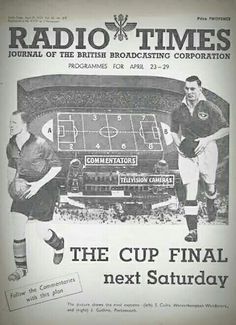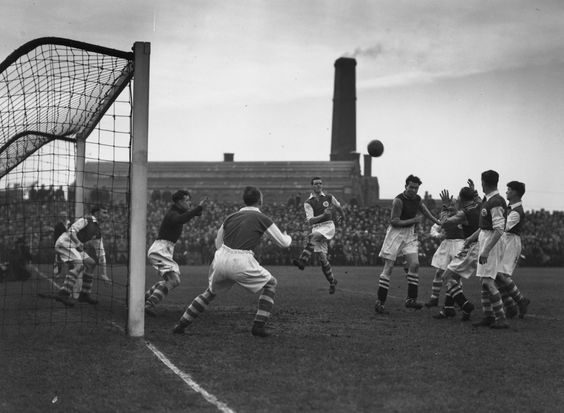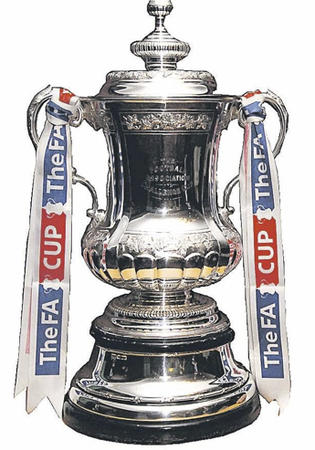 For the purposes of this article
For the purposes of this article
D 1 means Football League (1888-1892), First Division (1892-1992), and Premier League (1992- ).
D 2 means Second Division (1892-1992), First Division (1992-2004) and Championship (2004- ).
D 3N means Third Division North (1921-1958).
D 3S means Third Division South (1921-1958).
D 3 means Third Division (1920-21), (1958-1992), Second Division (1992-2004) and League 1 (2004- ).
D 4 means Fourth Division (1958-1992), Third Division (1992-2004) and League 2 (2004- ).
January after all the Christmas turkey and New Year booze is cleared away, along comes the third round of the FA Cup. English football fans have always loved tradition, the FA Cup is full of tradition and romance. The FA Cup also was extremely popular, that has sadly changed.
The format of the FA Cup as we know it started in 1925-26. The first matches are held in September with Round 1 proper usually scheduled for November with the best of the non-league joining lower league clubs. January, is only the starting point for the D 1 and D 2 clubs.
The new FA Cup schedule was an instant success and extremely popular with football fans. If you compare cup matches to run of the mill Football League games, a club being drawn at home in the FA Cup from whichever division, would enjoy a bumper attendance. For lower league clubs any forebodings about having to play 2 games before the big boys came in, was offset by the fact that if they did get through to Round 3 they had the chance of a really big pay day if drawn at home. Plus of course it is a true meritocracy, winning brings rewards.
Drawn away to a D 1 or D 2 club meant they would enjoy their share of the receipts which could be more than if they had been drawn at home. Not being drawn against a D 1 or D 2 club did not mean the end of the world either. Any lower league club would have a better chance of progressing to the subsequent rounds and the chance of a big pay day further down the road. So as long as the big crowds showed up for the FA Cup everyone was happy. The clubs at all levels got big pay days in January, when historically Football League attendances dipped. The fans enjoyed the spectacle and romance of lower league or even non-league clubs meeting and beating the big boys.
One way of measuring the success of the FA Cup was to count the number of clubs for which an FA Cup home tie was the largest attended match of the season. As the competition unfolded each season, home clubs enjoyed larger and larger crowds. On average a Round 3 cup tie would be the 5th or 6th highest attendance, but for many clubs it was the highest of the season. The only exceptions would be a year like 1939 which was disrupted by cold weather or 1974 which saw the whole country affected by the 3 day week, coal strikes and fuel crisis.
Late January usually brings Round 4, and home drawn clubs enjoy their 3rd or 4th highest home gate of the season. Round 5 was even better with clubs on average enjoying their 2nd or 3rd highest home gate of the season. An average, hides the fact that for many clubs drawn at home regardless of the opponent, the FA Cup was the biggest payday of the season. Being drawn at home repeatedly or playing replays, it made little difference. The FA Cup was a moment of excitement and exoticism where your team could be playing the biggest clubs with the potential for victory and the honour of knocking another team out of the competition.
With the FA Cup semi-finals and finals being played on neutral grounds, Round 6 was the pinnacle and last chance to cash in with a home tie. Of the 212 Round 6 cup ties played between 1926 and 1985, more than half (116) were the biggest domestic home gate of the season. If you include the second highest, the figure was 164. Frequently Round 6 was the big crowd day for the home club. Three of the four Round 6 matches in 1937, Tottenham Hotspur v Preston North End, West Bromwich Albion v Arsenal and Wolverhampton Wanderers v Sunderland were either record ground attendances, record receipts or both for the home clubs. The odd match out Millwall v Manchester City was Millwall’s second highest gate of the season, only out done by their Round 5 tie at home to Derby County which was a record ground attendance.
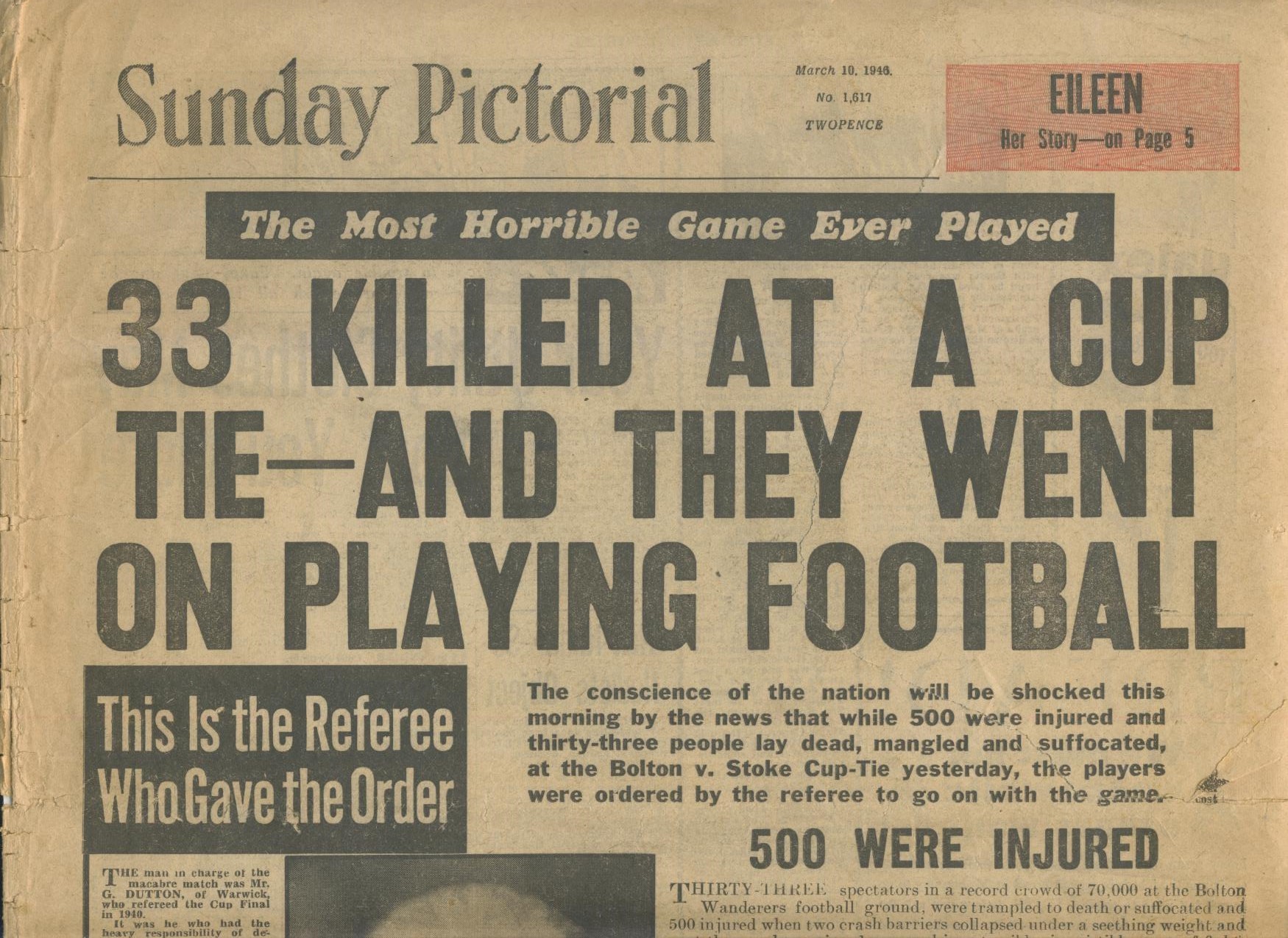
Round 6 1938 surpassed it with all 4 ties Aston Villa v Manchester City, Brentford v Preston North End, Tottenham Hotspur v Sunderland and York City v Huddersfield Town being record ground attendances. The only replay, Huddersfield v York City was Huddersfield’s biggest gate of the season. The FA Cup was at its peak being the glamour competition of English football.
It was a Round 6 tie in the first post war 1945-46 season that showed the authorities that maybe crowding people into poorly designed Victorian football grounds might not be a good idea. Bolton Wanderers v Stoke City saw 52,419 drawn to Burnden Park, during which 33 people were crushed to death. The match was delayed for 30 minutes before being completed with the dead covered over with coats, laid out along the touchline.
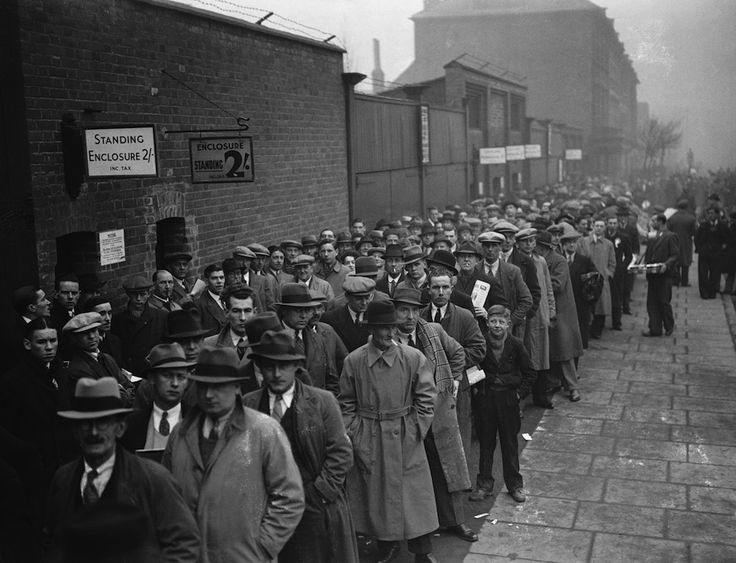
The post war football boom lifted the attendances of both the league and FA Cup. Throughout the 1950’s, 1960’s and 1970s, home FA Cup ties usually brought bonus attendances over and above the norm. This bonus diminished during the 1980’s, but still carried on well into the 1990’s. In the 1997-98 season, on average, league games over took FA Cup games in popularity.
For D 1 clubs this switch over point came earlier. In the 1990-91 season D 1 clubs would expect a league game to draw bigger crowds than FA Cup ties. Of the 14 FA Cup Round 3 ties that had D 1 clubs at home, none attracted gates that were better than average league matches. Round 4 ties were not much better in regards to D 1 home cup attendances. Round 5 brought the bumper gates back for D 1 clubs. What helped for this particular season was the three epic Round 5 cup ties between Everton and Liverpool. Round 6 still held its magic with 3 of the 4 games enjoying their largest domestic attendances of the season.
For D 2 and D 3 clubs, the FA Cup also fell in popularity during the 1990’s. From 1997-98 onwards league game averages pulled away from the FA Cup average to a point where FA Cup attendances ranked near the bottom. Even Round 5 and Round 6 ties lost their attraction for fans. Apart from occasional matches, the FA Cup no longer commanded huge crowds. There have only been 4 ties since 1996 when a D 1 club at home’s attendance was the highest domestic gate of the season. The FA Cup did still hold its magic for lower league clubs, but only at home to D 1 clubs.
What was the cause of the decline in the FA Cup?
As with the earlier Burnden Park Disaster in 1946 it was another stadium disaster that signalled a change in the perception of FA Cup and football itself. The Hillsborough Disaster of 1989 revealed the poor and inept management of the FA. On four previous occasions, the FA had ignored warnings that Hillsborough was unsuitable to be a semi-final venue. In 1980 Arsenal v Liverpool, 1981 Tottenham Hotspur v Wolverhampton Wanderers, 1987 Coventry City v Leeds United and 1988 Liverpool v Nottingham Forest all had experienced crushing and overcrowding, and the FA had done nothing about it. It took Hillsborough in 1989 before the FA realised they had a problem. The FA still persevered with semi-finals at neutral league grounds, even going back to a rebuilt Hillsborough, before in 2008 deciding that all semi-finals would be played at Wembley Stadium.
The new Premier League with all of its riches has also damaged the FA Cup. In earning TV money, the Premier League has turned every game into an occasion to the ordinary football fan. Suddenly the FA Cup looks tired and old fashioned. Priorities have changed for D1 and D2 clubs and their fans. Getting into or staying in the Premier League is more important than anything else. For D 3 and D 4 clubs the FA Cup can still provide much needed extra finances, but only if they get to Round 3 and then get drawn against a D 1 club.
For the Football Association (FA), the FA Cup and England international matches are their most important assets. 1999 was another pivotal year for the FA Cup, the advent of up to 4 Premier League clubs qualifying for the new format Champions League effectively meant that even the big clubs who could usually assume that they could remain in D1 had to prioritise the Premier League above the FA Cup.
At the same time the FA have devalued the FA Cup themselves. During the abortive bid to host the 2006 FIFA World Cup, the FA seeking to curry favour with FIFA, asked FA Cup holders Manchester United to withdraw from the 1999-00 FA Cup competition to compete instead in the 2000 FIFA Club World Championship held in Brazil in early January. Manchester United qualified as UEFA Champions League winners for 1999, but they had initially decided not to take part in FIFA the tournament, but were convinced by the FA that it would help in the World Cup bid. This left the Round 3 draw for the FA Cup one club short. The FA chose to draw one of the losing teams from Round 2 as a lucky loser. Darlington was that team and they were drawn away to D 1 club Aston Villa where they lost for a second time 2-1 in front of 22,101 people, lower than any of Villa’s league games that season. Despite devaluing their own tournament, the FA only came third in the voting to host the 2006 World Cup, behind Germany and South Africa, by a then highly corrupt FIFA.
After this perfect storm, here we are on the eve of Round 3 of the FA Cup for 2018.
Today what does not help the FA Cup and its rebirth is the insipid TV coverage. It all has the whiff of a focus group about it. What does the FA Cup mean? Was the question. The answer is tradition, nostalgia and giant killing like Hereford United circa 1972 came the reply. Well, okay tradition err… Pass on that! Okay what else? Nostalgia? Okay we can have some old film stock of football matches at the beginning that is not necessarily FA Cup related, but okay that’s that sorted.
Right what do we have left? Oh that’s right giant killing!
It is with this mind-set that we now have the new concept of the disappointing draw. Not a 0-0 draw on a football field, but a disappointing draw for Round 3 of the FA Cup. A draw without the mouth-watering ties TV seems to want. But how can you have a disappointing draw when it is a blind draw to begin with? Traditional football fans understand this. The random and unscripted nature of the FA Cup is its true glory, something TV coverage of the FA Cup seems to miss.
Last season saw 2 non-league clubs get as far as Round 5 and one as far as Round 6 for the first time since the reorganization in 1925. A new era seemed to have been born for the FA Cup and TV was happy. But for 2018 there are no non-league clubs in Round 3, a first since 1951. So if there are no non-league clubs causing giant killing feats for TV what will they do this season?
The FA Cup should be made for TV. It has the tradition and nostalgia that is always popular in the UK. What it really has though, is something that is rare these day. It is authentic, it is unscripted, it is sudden death and it leads itself to the hero architype, the hero of the last minute against all the odds. A man who becomes the hero of the town, or club. A man who becomes legendary from the ranks of the ordinary. But what do we get from TV? We get an overweight man eating a pie!
It has been proposed that the FA Cup winners should get a place in the following season’s Champions League, but it seems unlikely that either the Premier League or UEFA would provide a place for the oldest major cup competition in the world. It is difficult to see the current situation changing any time soon. It would be sad to see the venerable FA Cup become a very poor second rate relation like the domestic cup competitions in Europe. Looking at the FA it difficult to see if they even have the ability to turn it around or fill anyone with confidence that they look likely to do so.
The FA Cup needs saving and now, it cannot be left to drift off into oblivion, it deserves better than this. Will the Football Association save the FA Cup? We can only hope so.
David Coalman January 2018
